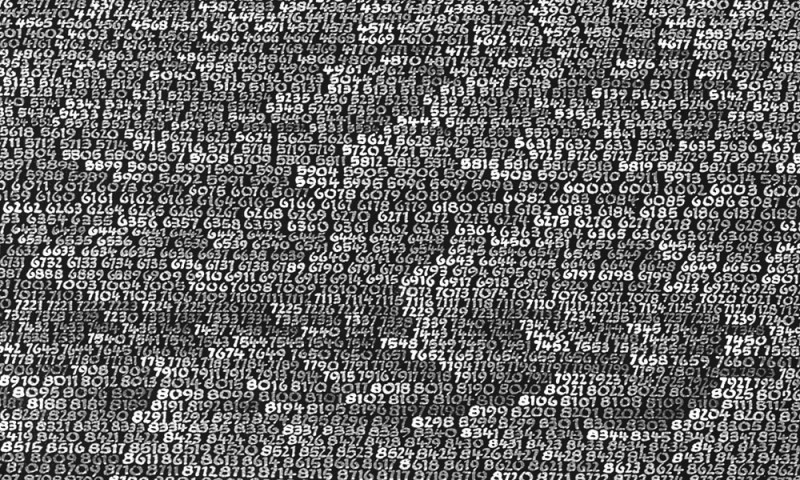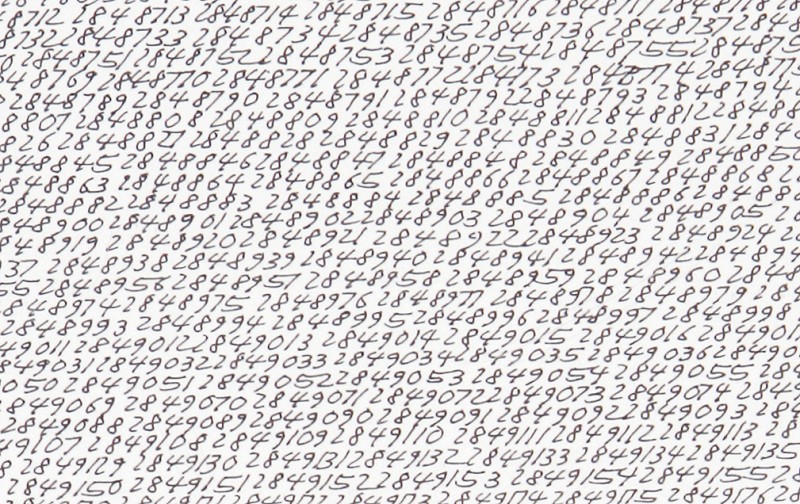In meiner Sammlung von Kunst mit großen Quantitäten habe ich noch gar nicht den Altmeister gezeigt: Roman Opalka.
Wikipedia:
In 1965, in his studio in Warsaw, Roman Opałka began painting a process of counting – from one to infinity. Starting in the top left-hand corner of the canvas and finishing in the bottom right-hand corner, the tiny numbers were painted in horizontal rows. Each new canvas, which the artist called a ‚detail‘, took up counting where the last left off. Each ‚detail‘ is the same size (196 x 135 cm), the dimension of his studio door in Warsaw. All details have the same title, „1965 / 1 – ∞“; the concept had no end, and the artist pledged his life to its execution: ‚All my work is a single thing, the description from number one to infinity. A single thing, a single life.‘
Over the years there were changes to the ritual. In Opałka’s first details he painted white numbers onto a black background. In 1968 he changed to a grey background ‚because it’s not a symbolic colour, nor an emotional one‘, and in 1972 he decided he would gradually lighten this grey background by adding 1 per cent more white to the ground with each passing detail. He expected to be painting virtually in white on white by the time he reached 7 777 777: ‚My objective is to get up to the white on white and still be alive.‘ As of July 2004, he had reached 5.5 million. Adopting this rigorously serialized approach, Opałka aligned himself with many other artists of the time who explored making art through systems and mathematics, like Daniel Buren, On Kawara, and Hanne Darboven.
Als Opalka diesen August starb, war er in der 5. Million und die Bilder schon annähernd weiß. Für Ölgemälde Opalkas werden auf dem Kunstmarkt derzeit bis zu 1.200.000 US-Dollar bezahlt.
(via Triangulation)




